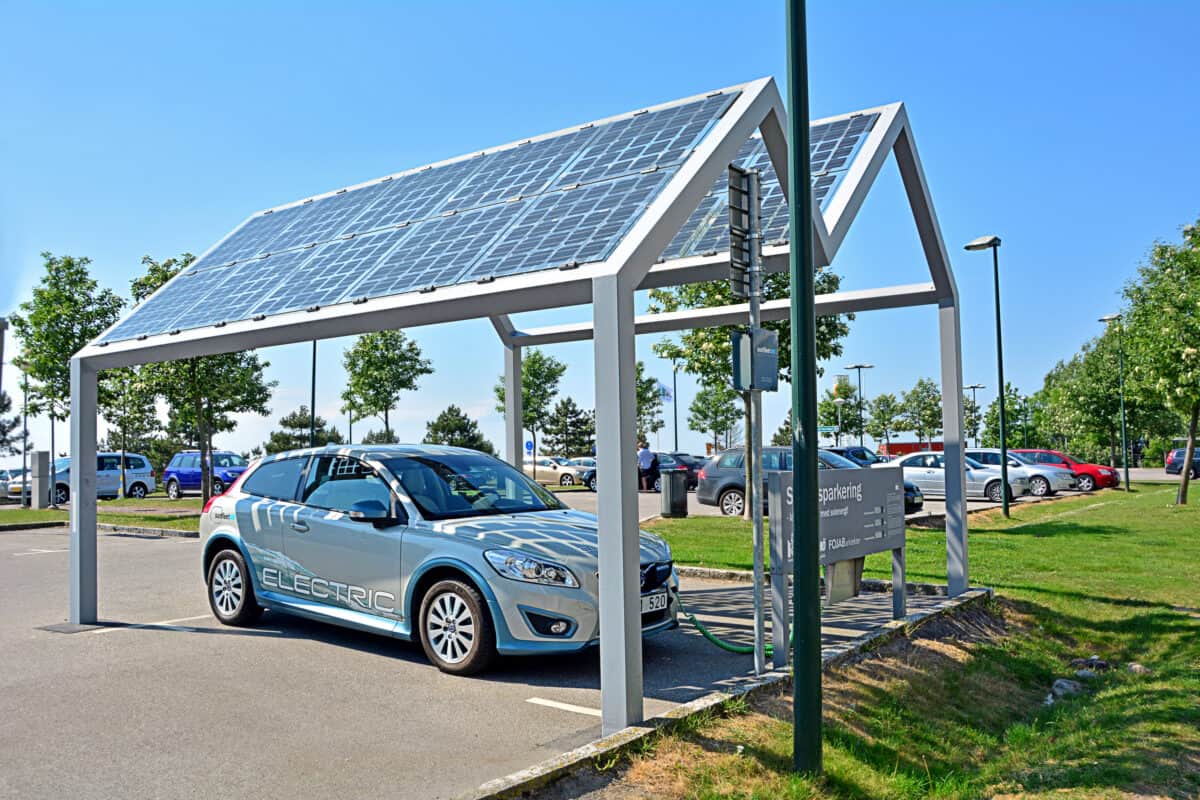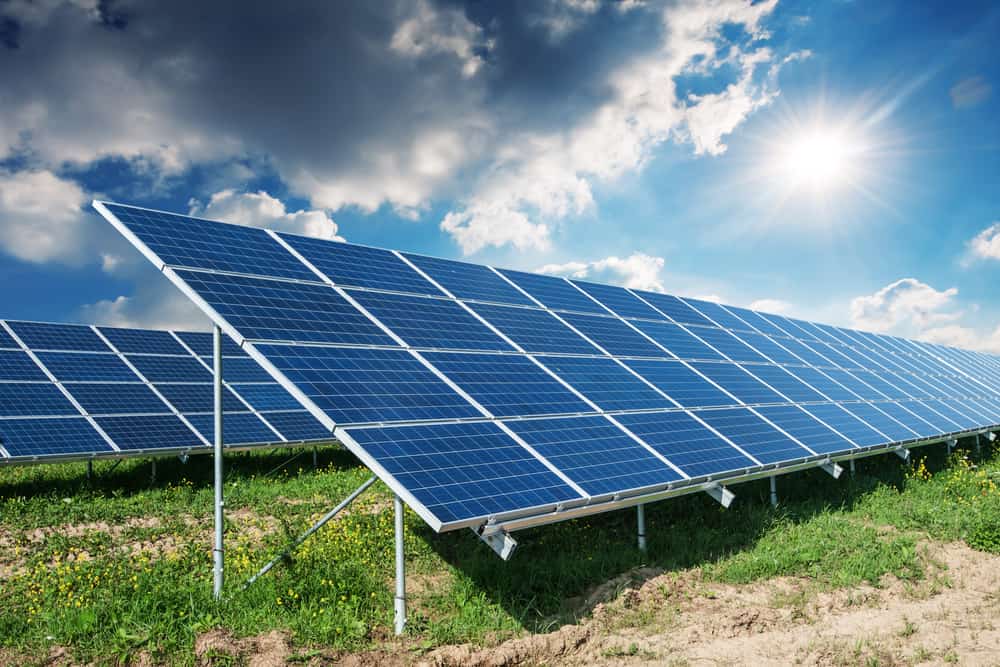As of 2021, renewable energy sources accounted for 20% of US electricity generation. While this is far from the country’s goal of total renewable energy by 2050, it does suggest a committed effort to develop the technology. Solar energy makes up the lion’s share.
With its long history of application and simple manufacturing, it’s easy to understand why solar is monumental. Continue reading for everything you need to know about solar energy and how it developed over time.
What Is Solar Energy: Complete Explanation
Solar energy has seen rapid growth in the last 30 years but has been tapped for many years. One of the top alternatives to coal, solar energy converts light from the sun into electricity using semiconductors enhanced with lenses or mirrors. Their popularity has risen and fallen through the years depending on our dependency on fossil fuels.
Physicists and inventors started experimenting with photovoltaic energy as early as the 1830s. Applications resulted in highly inefficient systems, with photovoltaic outputs as low as 1%. With numbers this low, it was hard to claim further development. Solar energy wouldn’t see legitimate use again until the 1950s.
While the technology found a solid base in the second half of the 20th century, it wasn’t until the 1990s that solar was used beyond the commercial. However, with increasing ecological concerns and huge tariffs, the cost of alternatives hit an all-time low. Solar energy now sees applications in commercial and residential electricity, heating, lighting, and more.

Solar Power is the only truly smart and sustainable energy source for charging EVs.
Solar Energy: An Exact Definition
The Solar Energy Industries Association (SEIA), the largest trade association for solar and related industries in the United States, defines solar energy as “energy from the sun that is converted into thermal or electrical energy.”
“It is the cleanest and most abundant renewable energy source available.”
“[Solar energy] is harnessed for a variety of uses, including generating electricity, providing light…, and heating water for domestic, commercial or industrial use.”
How Does Solar Energy Work?

Components
Solar energy converts the light from the sun (also called thermal radiation) into electricity. The harnessed power travels through the solar system and is used for a variety of applications.
Solar cells are the fundamental component of converting solar energy into electricity. Made of semiconductor material, these small, concentrated blocks absorb sunlight. The type of semiconductor material determines several aspects of the system, including:
- Bandgap (the wave frequency that the cell can absorb)
- Lifespan
- Cost
- Accessibility
Manufacturers connect several solar cells in a series and fortify them with reflective glass to create a panel. Solar panels come in a variety of sizes depending on their use. The solar panel’s electrical efficiency varies with its characteristics and external conditions.
Most solar applications use a form or storage in their function. Battery storage, such as lithium-ion or AGM deep cycle systems, are widely used in residential and commercial practices. However, other forms of storage exist, including thermal (for heating and cooling solutions) and mechanical (flywheels, compressed air).
Characteristics
One of the key factors influencing a solar panel’s feasible efficiency is its photovoltaic cell composition. Silicon is a popular common semiconductor, providing an efficient bandgap for the price and lifespan of the material. Silicon solar cells have the capacity to convert up to 22% of the thermal energy that falls on them into electricity. Other photovoltaic cell compositions include:
- Cadmium Telluride
- Copper Indium Gallium Diselenide
- Perovskite
- Organic compounds
- Quantum dots
- Multijunction
- Concentration PV
Practically speaking, solar panels come in two types. Monocrystalline panels are made of a single silicon crystal and have a rigid form. Polycrystalline panels blend several silicon crystals and are more flexible in nature. While polycrystalline panels have multiple applications, they tend to sacrifice efficiency. Monocrystalline panels tend to offer more energy production, reaching up to 7% more efficiency.
Conditions
While a solar panels’ semiconductors determine peak efficiency, several conditions influence exactly how much they will produce. One of the factors that determine solar output is peak sun hours.
This is the most amount of sun an area receives on average. For example, solar panels in Utah, where the peak sun hours are 5.26 hours, will receive more power than solar panels in Washington, with 3.57 peak sun hours.
Solar panel orientation also influences the amount of thermal energy it can receive. While it’s easy enough to mount a solar array facing up, one can improve its efficiency by positioning it where the sun is often located.
The most influential adjustment is to position the panel based on your hemisphere. For example, continental United States is located in the Northern Hemisphere, which always puts the sun in the South. Therefore, orienting panels to face up and to the south would increase their efficiency for US users.
Shade can also affect the output of a panel; a single solar that is covered can drastically reduce an entire array’s efficiency. This happens because every cell is connected to the same current.
It’s helpful to think of a panel like a river stream. If there is a jam in the stream (a shaded solar cell), then only the amount of water that can flow through the jam will flow. The same applies to solar energy. A panel can only produce power equal to the amount of thermal energy the weakest solar cell can collect.
Where Did Solar Energy Originate From?
Early Development
The early 1800s saw the massive development of electricity and its applications. Solar energy and the photovoltaic effect came with it, with French physicist Alexandre Edmond Becquerellar demonstrating it in 1839.
The effect was used in practice in New York 40 years later when American inventor Charles Fritts designed the first residential solar array. The application offered a glimpse of an alternative to coal, but not efficient enough to pursue commercially.
First Commercial Use
The application of solar energy returned in the 1950s as the US and the USSR competed for supremacy during the Cold War. Alongside the founding of NASA, the US government launched its first solar-powered spacecraft (Vanguard I) in 1958. With massive federal funding, alternative energy found its base in the modern era. However, the space race wouldn’t be enough to push solar energy into commercial or residential territories.
1979 Oil Crisis
The 1970s saw a major disruption in global oil supply, with Saudia Arabia placing an embargo on the source in 1973 and the Iranian government becoming increasingly less stable. Oil prices shot up suddenly and misinformation led people to believe prices would keep surging.
The concern came to a head in 1979 following the Iranian Revolution, which resulted in a major decrease in oil production in the country and the surrounding region.
The 1979 oil crisis forced leading countries to reform their energy policies, which brought solar technology to center stage. Japan, Germany, and the United States prioritized solar manufacturing, and the global industry swelled.
By the 1990s, municipalities began implementing utility-scale solar farms. Years later, the cost of solar energy dropped nearly 85%.
What Are the Applications of Solar Energy?
Solar Electricity
Residential and commercial property owners use solar to power their homes and buildings. These systems are low-cost and can even assist the municipal electric grid. Solar electricity is typically stored in a deep-cycle battery and offers practical applications for emergencies or off-grid scenarios.
Solar Heating

Solar energy also provides solutions for water and ambient heating. Rooftop arrays absorb the sun’s heat and deliver it to a water tank, providing hot water where needed. Alternatively, solar panels can pair with a forced hot air system to circulate air through spaces. This helps keep your interior warm during cold seasons, even with less sun.
Solar Lighting
Simple lighting systems collect sun during the day to power lights at night. These systems are relatively easy to manufacture and have a life expectancy of 10-20 years. Solar lighting can make for a quick solution in dark spaces around your home (such as these solar spotlights from Amazon), but they have also seen practical use in municipalities.
Examples of Solar Energy in the Real World
Ivanpah Project
The Ivanpah Solar Electric Generating System (ISEGS) is the world’s largest solar power plant in the world. Located in the Mojave Desert in California, Ivanpah is capable of producing 377 megawatts of solar energy. This is enough power to support 140,000 homes while also reducing carbon dioxide emissions by 400,000 tons annually.
Beaumont Solar Streetlights
Also in California, the City of Beaumont has installed hundreds of solar streetlights throughout the municipality. The fastest-growing city in the state accommodates new neighborhoods with solar solutions, which drastically reduces the cost of development and maintenance. Solar streetlights save the city money on digging trenches, which helps it invest in community engagement.
NASA’s High-Efficiency Cells
While silicone semiconductors work great in most situations, engineers at NASA continue to push the limits in solar panel efficiency for satellites. The association is working with III-V multijunction solar cells, which delicately layer multiple semiconductors with different bandgap ratings. These photovoltaic cells have reached 46% efficiency and help power space missions, such as the Lunar Gateway of the Artemis program.
Solar Energy: Further Reading
As we continue to pivot from coal and oil with environmental concerns in mind, solar energy will play a larger role. Thermal power, along with other renewable energy sources, could make up the majority of our energy output in the future. For more on how we’re using solar power today, check out the articles below.
- The 5 Best Solar Lanterns for the Modern Camper – Whether out in the forest or as an emergency light source, these solar lanterns are reliable in a pinch.
- Aptera Motors: Guide to the Solar Electric Vehicle Manufacturer – Learn about the automaker that is working on the next generation of electric vehicles.
- The 10 Largest Solar Panel Companies in the World, and What They Do – With the solar industry exploding in the 21st century, these companies are building the future of our energy infrastructure.
The 6 Best Solar-Powered Battery Packs You Can Buy Today – When you absolutely need power wherever you go, these solar battery packs can charge themselves even while disconnected.
Want to Retire Early? Start Here (Sponsor)
Want retirement to come a few years earlier than you’d planned? Or are you ready to retire now, but want an extra set of eyes on your finances?
Now you can speak with up to 3 financial experts in your area for FREE. By simply clicking here you can begin to match with financial professionals who can help you build your plan to retire early. And the best part? The first conversation with them is free.
Click here to match with up to 3 financial pros who would be excited to help you make financial decisions.
The image featured at the top of this post is ©Photo by Kindel Media: https://www.pexels.com/photo/a-man-installing-solar-panel-9875418/.
